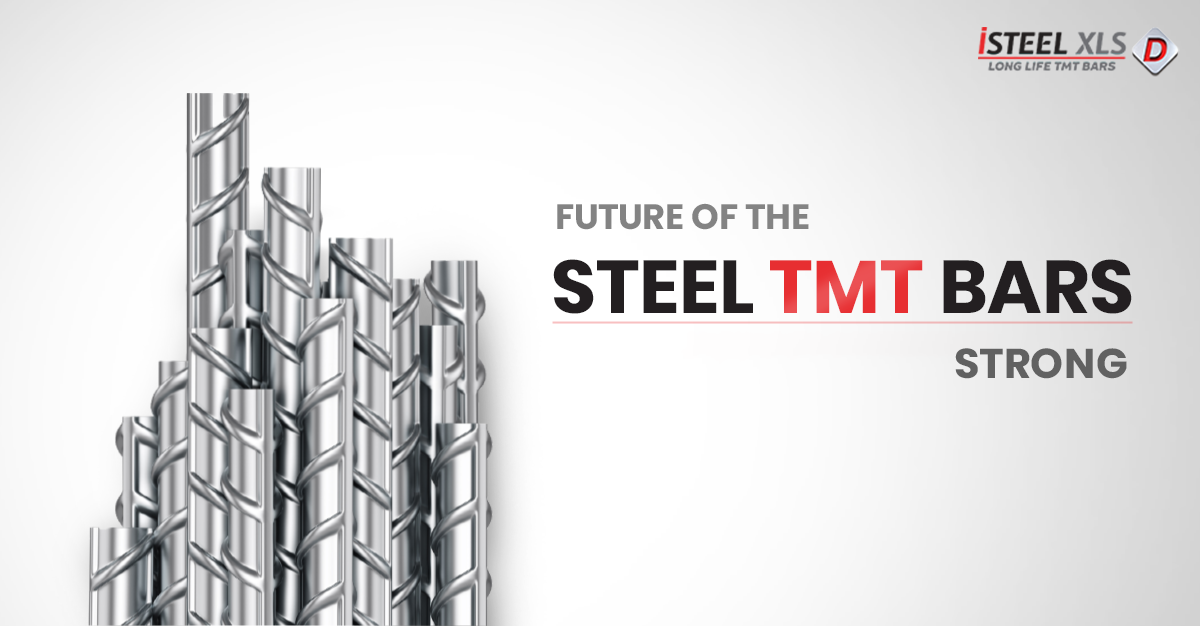Science Behind Steel: Engineering Principle & Benefits of TMT Bar

- By : admin
- 0 Comments
Steel TMT (Thermo-Mechanically Treated) bars are a vital component in modern construction, known for their strength, durability, and reliability. Understanding the science behind steel and the engineering principles that govern TMT bars is crucial for builders, architects, and engineers. In this blog, we will delve into the science behind steel, explore the engineering principles applied in TMT bar production, and highlight the benefits of using Steel TMT bars for construction.
According to a report by Research and Markets, the global TMT steel bar market is projected to reach $98.5 billion by 2026, driven by the growing construction industry and the demand for durable and high-strength materials. The Indian construction industry alone consumes around 60-65% of the total steel produced in the country, with TMT bars being the preferred choice for reinforced concrete structures.
The Science Behind Steel:
Steel is an alloy composed primarily of iron and carbon, along with small amounts of other elements such as manganese, chromium, and nickel. Its unique properties make it a preferred material in construction. Steel offers exceptional strength, ductility, and versatility, allowing it to withstand heavy loads and structural stresses.
The Engineering Principles of TMT Bars:
TMT bars undergo a specific manufacturing process that involves a combination of heat treatment and controlled cooling. This process imparts desirable properties to the bars, making them ideal for construction applications. The engineering principles applied in TMT bar production include:
1. Thermo-Mechanical Treatment:
Thermo-mechanical treatment involves subjecting the steel bars to controlled heating and subsequent rapid cooling. This process helps in achieving a fine-grained microstructure with uniform hardness throughout the bar. It improves the strength, ductility, and weldability of the bars, making them suitable for reinforced concrete structures.
2. Quenching and Self-Tempering:
During the manufacturing process, the TMT bars are quenched by rapidly cooling them in water. This quenching stage provides a hardened surface layer, while the core remains relatively softer. The self-tempering effect occurs as the heat from the core diffuses into the hardened surface layer, resulting in a tempered martensitic structure. This combination of hardness on the surface and toughness in the core enhances the overall performance and structural integrity of the TMT bars.
Benefits of TMT Bars in Construction:
High Strength and Durability:
Steel TMT bars exhibit excellent strength, enabling them to withstand heavy loads and stresses. Their superior tensile strength makes them ideal for reinforcing concrete structures, providing the necessary support and resistance against structural deformations and failures. The durability of TMT bars ensures the longevity of the construction, reducing the need for frequent repairs or replacements.
Enhanced Safety and Seismic Resistance:
In earthquake-prone regions, the use of TMT bars is crucial. Their ductile nature allows them to absorb and dissipate seismic energy during earthquakes, thereby minimizing structural damage. TMT bars with higher elongation and better bendability offer improved seismic resistance, protecting both the structure and its occupants.
Corrosion Resistance:
TMT bars are manufactured with corrosion-resistant properties. This is achieved through the application of specialized coatings or the use of corrosion-resistant alloys. The corrosion resistance of TMT bars prevents rust formation, ensuring the longevity and structural integrity of the construction, particularly in coastal areas or environments with high humidity levels.
Easy Workability and Flexibility:
TMT bars are known for their easy workability and flexibility, making them convenient to handle and shape during construction. They can be easily bent, cut, and welded, allowing for efficient construction practices and customization as per the design requirements. This workability factor enhances the construction process and enables complex architectural designs to be realized.
Cost-Effectiveness:
TMT bars offer a cost-effective solution for construction projects. Despite their superior strength and durability, TMT bars are competitively priced compared to other reinforcing materials. Their long lifespan and low maintenance requirements result in cost savings over the lifetime of the structure. Additionally, the ease of handling and workability of TMT bars reduces construction time, leading to further cost reductions.
Design Freedom:
TMT bars provide architects and engineers with design freedom and flexibility. Their high tensile strength allows for longer spans and thinner structural elements, opening up possibilities for innovative and visually appealing designs. With TMT bars, complex architectural features and intricate detailing can be easily incorporated into the construction, enabling the realization of unique and aesthetically pleasing structures.
Understanding the science behind steel and the engineering principles applied in the production of TMT bars is essential for construction professionals. The unique properties and benefits of TMT bars, including high strength, durability, seismic resistance, corrosion resistance, easy workability, fire resistance, and eco-friendliness, make them an indispensable component in modern construction. By leveraging the science and engineering principles behind Steel TMT bars for construction, builders can ensure structural integrity, safety, and sustainability in their construction projects, contributing to a stronger and more resilient built environment.
